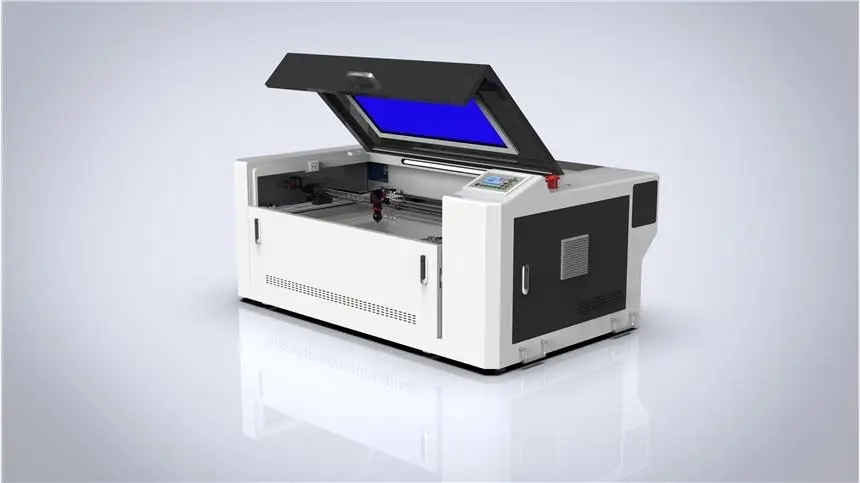The main key technologies of CO2 laser cutting machines are the integrated technology of light, machinery, and electricity. The parameters of the laser beam, the performance and accuracy of the machine and CNC system all directly affect the efficiency and quality of laser cutting. Especially for parts with high cutting accuracy or large thickness, it is necessary to master and solve the following key core technology – focus control technology: focus position control technology.

One of the advantages of laser cutting is the high energy density of the beam, usually>10W/cm2. Due to the energy density being proportional to 4/π d2, the diameter of the focal spot should be kept as small as possible to produce a narrow slit; At the same time, the diameter of the focal spot is also proportional to the focal depth of the lens. The smaller the focal depth of the focusing lens, the smaller the diameter of the focal spot, the finer the cutting edge, and the more beautiful the cutting product will be. However, in the case of splashing during cutting, the lens can be easily damaged if it is too close to the workpiece. Therefore, high-power CO2 laser cutting machines are widely used in industrial applications with a focal length of 5 “~7.5” (127~190mm). The actual focal spot diameter is between 0.1 and 0.4mm. For high-quality cutting, the effective depth of focus is also related to the lens diameter and the material being cut. For example, using a 5 “lens to cut carbon steel, the focal depth is within the range of+2% of the focal length, which is about 5mm. Therefore, controlling the position of the focus relative to the surface of the material being cut is very important. Considering factors such as cutting quality and cutting speed, in principle, for metal materials<6mm, the focus should be on the surface 6mm carbon steel with a focus on the surface 6mm stainless steel with a focus below the surface. So it is also necessary to choose focusing lenses with different focal lengths for different materials. Generally, there are two different types of laser lenses for cutting thick and thin materials.
In industrial production, there are three simple methods for laser cutting machines to determine the focal point position:
1. Printing method: Move the cutting head from top to bottom and perform laser beam printing on a plastic plate, with the smallest printing diameter as the focus.
2. Oblique plate method: Use a plastic plate placed at an angle to the vertical axis to pull it horizontally, searching for the minimum point of the laser beam as the focal point.
3. Blue Spark Method: Remove the nozzle, blow air, and apply a pulse laser to the stainless steel plate, causing the cutting head to move from top to bottom until the maximum blue spark is the focus.
For cutting machines with flying optical paths, due to the divergence angle of the beam, the distance between the near and far ends of the cutting is different, and there is a certain difference in the beam size before focusing. The larger the diameter of the incident beam, the smaller the diameter of the focal spot. In order to reduce the changes in the size of the focal spot caused by changes in the beam size before focusing, manufacturers of laser cutting systems both domestically and internationally have provided some specialized devices for users to choose from: a collimator, which is a commonly used method of adding a collimator to the output end of a CO2 laser for beam expansion. After beam expansion, the beam diameter increases and the divergence angle decreases, Make the beam size close to the same before focusing the near and far ends within the cutting working range. Add an independent lower axis of the moving lens on the cutting head, which is two independent parts from the Z-axis that controls the distance from the nozzle to the material surface (standoff). When the machine tool workbench moves or the optical axis moves, the beam also moves from the near end to the far end of the F-axis, so that the diameter of the spot remains consistent throughout the entire processing area after the beam is focused.




